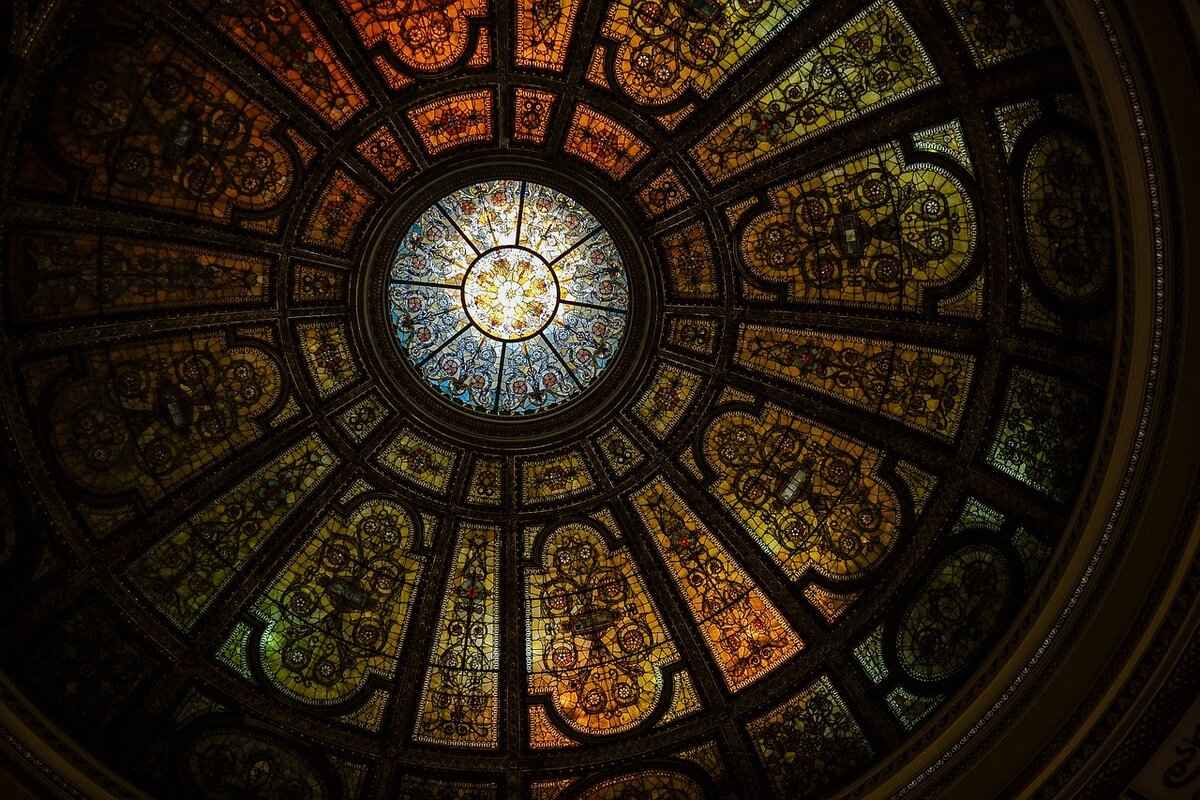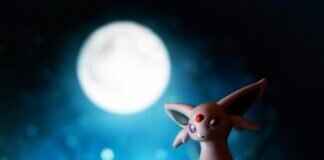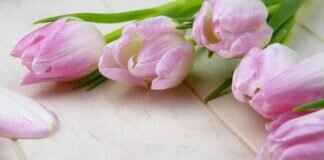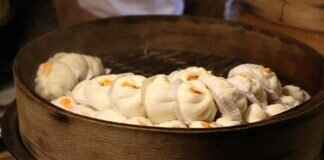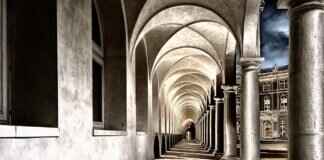This article delves into the rich history, techniques, and significance of Bengal’s terracotta art, exploring its cultural impact and contemporary relevance in today’s artistic landscape.
The Historical Roots of Bengal’s Terracotta Art
Bengal’s terracotta art boasts a long-standing tradition that dates back to ancient times. This art form reflects the region’s cultural and artistic evolution through various dynasties and influences, showcasing the creativity and craftsmanship of local artisans.
Significance of Terracotta Art in Bengali Culture
Terracotta art holds a unique place in Bengali culture, symbolizing spirituality, community, and the connection between the past and present in the region’s artistic expressions. It serves not only as decoration but also as a medium of storytelling and cultural preservation.
Religious Influences on Terracotta Art
The motifs and themes in Bengal’s terracotta art are often deeply intertwined with religious beliefs. Artists frequently depict deities, rituals, and mythological narratives that resonate with local traditions, enriching the cultural fabric of the region.
Hindu Deities in Terracotta Art
Many terracotta pieces illustrate Hindu deities, embodying the rich tapestry of faith and devotion that permeates Bengali society. These artworks often serve as offerings in temples and homes, reinforcing the community’s spiritual connections.
Buddhist Themes in Terracotta Creations
Buddhist influences are also evident in Bengal’s terracotta art, with sculptures depicting the life of Buddha and various symbols associated with Buddhist philosophy. These pieces reflect the harmonious coexistence of different faiths in the region.
Techniques and Materials Used in Terracotta Art
The craftsmanship behind Bengal’s terracotta art involves specific techniques and materials, emphasizing the skill and creativity of artisans. Traditional methods have been preserved over generations, ensuring the authenticity and quality of each piece.
Famous Terracotta Art Sites in Bengal
Several locations in Bengal are renowned for their terracotta art, attracting visitors and art enthusiasts eager to explore the intricate works and their historical contexts. Notable sites include:
- Bankura District: A hub of terracotta craft known for its vibrant sculptures and diverse artistic expressions.
- Murshidabad: Famous for its terracotta temples featuring elaborate carvings that narrate historical events and mythological stories.
The Modern Revival of Bengal’s Terracotta Art
In recent years, there has been a resurgence of interest in Bengal’s terracotta art. Contemporary artists are blending traditional techniques with modern aesthetics, creating innovative works that appeal to new audiences.
Contemporary Artists and Their Contributions
Numerous contemporary artists are redefining Bengal’s terracotta art, incorporating new themes and materials while staying true to the core principles of this ancient craft. Their works often reflect contemporary issues, making the art form relevant in today’s context.
Terracotta Art in Modern Exhibitions
Modern exhibitions and art fairs have begun to prominently feature terracotta art, allowing a new generation of artists to showcase their work and connect with global audiences. This exposure is vital for the continued evolution and appreciation of the art form.
Conclusion: The Enduring Legacy of Bengal’s Terracotta Art
Bengal’s terracotta art continues to thrive, bridging the gap between tradition and modernity. As contemporary artists innovate while honoring the past, this unique cultural expression remains relevant and appreciated in the contemporary art scene.

The Historical Roots of Bengal’s Terracotta Art
Bengal’s terracotta art boasts a rich heritage that stretches back to ancient civilizations, offering a unique glimpse into the region’s cultural and artistic evolution. This art form has been shaped by various dynasties, each contributing to its distinct characteristics and themes.
The origins of terracotta art in Bengal can be traced to the early medieval period, where artisans began to experiment with clay, creating intricate designs and forms. Over centuries, the techniques evolved, influenced by the socio-political landscape and the influx of different cultures.
During the Pal and Sena dynasties, terracotta art flourished, particularly in the form of temple decorations and sculptures. These artworks often depicted mythological narratives, highlighting the region’s deep spiritual connections. The use of terracotta was not only practical due to the abundant availability of clay but also symbolic, representing the earth’s nurturing qualities.
As time progressed, Bengal’s terracotta art absorbed influences from Islamic and colonial periods, leading to a fusion of styles and themes. The intricate carvings found in temples and rural homes showcase a blend of Hindu and Islamic motifs, reflecting the region’s diverse cultural tapestry.
Today, Bengal’s terracotta art remains a vital part of its cultural identity. Artisans continue to honor traditional practices while also embracing modern techniques, ensuring that this ancient craft evolves with the times. The enduring legacy of Bengal’s terracotta art not only highlights the region’s historical significance but also its ongoing relevance in contemporary artistic expressions.
In conclusion, the historical roots of Bengal’s terracotta art are deeply intertwined with the region’s cultural heritage, showcasing a journey through time that reflects the artistic spirit of its people. As this art form continues to thrive, it serves as a testament to the resilience and creativity of Bengal’s artisans.
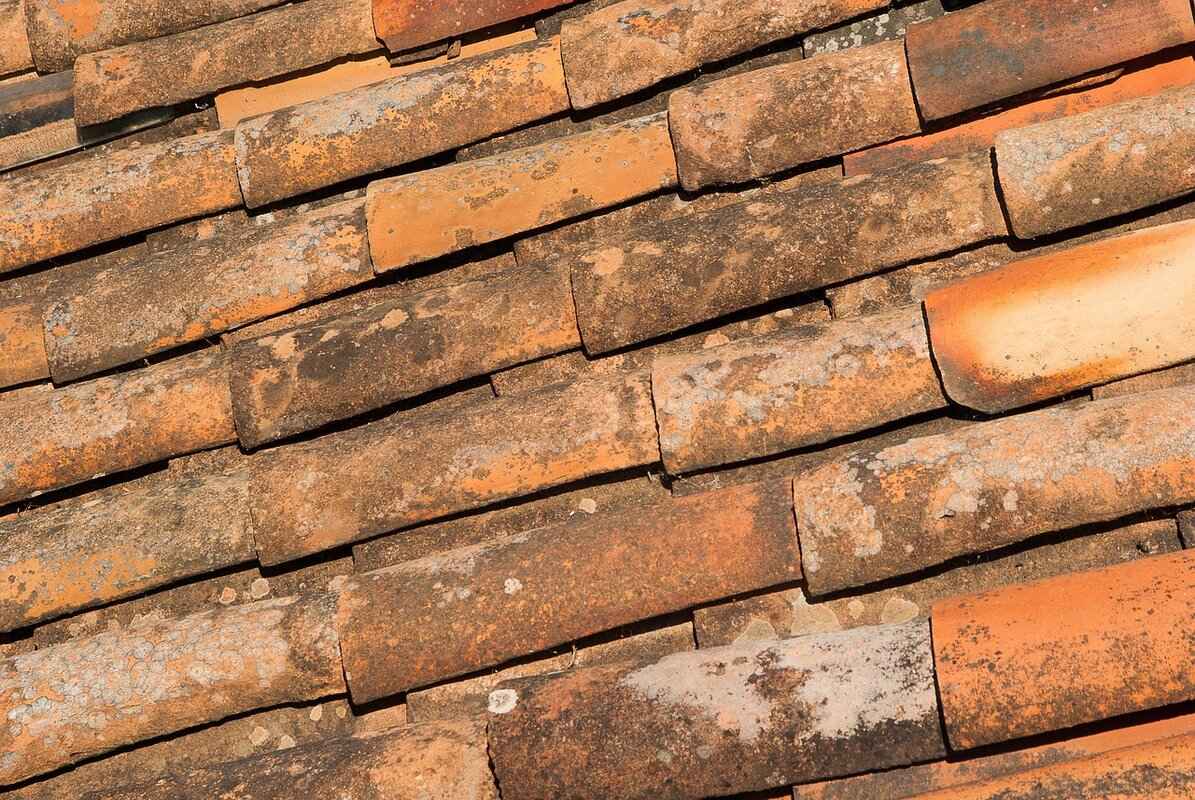
Significance of Terracotta Art in Bengali Culture
Terracotta art is a significant aspect of Bengali culture, embodying a rich tapestry of spirituality, community, and historical continuity. This unique art form not only showcases the artistic talents of the region but also serves as a vital link between the past and the present, reflecting the cultural heritage of Bengal.
The significance of terracotta art in Bengali culture can be observed through its various dimensions:
- Spiritual Symbolism: Terracotta pieces often depict religious themes, representing deities and mythological stories that resonate deeply within the local community. These artworks serve as offerings and are integral to rituals, enhancing the spiritual experience of the people.
- Community Identity: The craft of terracotta art fosters a sense of community among artisans and collectors. Local festivals often feature terracotta sculptures, reinforcing cultural ties and shared heritage.
- Historical Connection: The art form acts as a visual narrative of Bengal’s history, encapsulating the influences of various dynasties and cultural shifts over centuries. Each piece tells a story, connecting the present generation with their ancestors.
Moreover, the intricate designs and craftsmanship involved in creating terracotta art highlight the skill and creativity of Bengali artisans. This dedication to preserving traditional techniques ensures that the art form remains alive and relevant.
As contemporary artists embrace terracotta art, they infuse modern themes while respecting its historical roots. This revival not only keeps the tradition vibrant but also introduces it to new audiences, ensuring that terracotta art continues to thrive in the evolving landscape of Bengali culture.
In conclusion, the importance of terracotta art in Bengali culture is multifaceted, serving as a bridge between spirituality, community, and history. Its enduring legacy is a testament to the region’s rich artistic heritage and the ongoing efforts to keep it alive for future generations.
Religious Influences on Terracotta Art
Bengal’s terracotta art is a vibrant reflection of the region’s rich cultural tapestry, significantly influenced by its religious beliefs. The motifs and themes found within this art form are not merely decorative; they serve as a profound narrative that intertwines spirituality with everyday life. This interconnection is evident in the way artists depict various deities, rituals, and mythological stories that resonate deeply with local traditions.
One of the most striking aspects of Bengal’s terracotta art is its portrayal of Hindu deities. Sculptures often feature gods and goddesses such as Durga, Krishna, and Shiva, capturing their divine attributes and the essence of devotion. These artworks are not just for aesthetic appreciation; they are often used in religious ceremonies and as offerings in temples, reinforcing the importance of faith in the lives of the local community.
Similarly, Buddhist themes permeate the terracotta creations, reflecting the historical presence of Buddhism in Bengal. Artisans skillfully depict the life of Buddha and various symbols that embody Buddhist philosophy, such as the lotus flower and the wheel of Dharma. These representations serve as reminders of the teachings that promote peace, compassion, and enlightenment.
Furthermore, the intricate designs and motifs often narrate mythological narratives that are integral to Bengali culture. For instance, scenes from the Ramayana and Mahabharata are common, illustrating epic tales that have shaped the moral and ethical framework of the society. By incorporating these stories into their art, artisans not only preserve cultural heritage but also educate future generations about their rich history.
In conclusion, the religious influences on Bengal’s terracotta art are profound and multifaceted. The integration of spiritual beliefs with artistic expression not only enhances the aesthetic value of these works but also reinforces the community’s cultural identity. As Bengal continues to evolve, this unique art form remains a vital link to its past, showcasing the enduring legacy of its religious traditions.
Hindu Deities in Terracotta Art
The intricate world of Bengal’s terracotta art is a fascinating reflection of the region’s rich cultural heritage. Among the most captivating aspects of this art form is the depiction of Hindu deities, which serves as a testament to the deep-rooted spirituality and devotion prevalent in Bengali society. These terracotta pieces are not merely decorative; they embody the essence of faith, often being used as offerings in temples and homes, thereby enriching the spiritual atmosphere.
Terracotta sculptures featuring Hindu deities are characterized by their exquisite craftsmanship and attention to detail. Artisans meticulously create these pieces, often drawing inspiration from ancient texts and local traditions. The deities represented range from the widely revered Lord Krishna and Goddess Durga to various manifestations of Shiva and Ganesha. Each sculpture tells a story, capturing the divine attributes and narratives associated with these figures.
Moreover, the significance of these pieces extends beyond their aesthetic appeal. They serve as a medium through which devotees express their faith and devotion. In many households, terracotta representations of deities are placed on altars, becoming focal points for daily prayers and rituals. This practice not only reinforces the connection between the worshipper and the divine but also fosters a sense of community among believers.
In addition to their spiritual role, these terracotta artworks reflect the cultural identity of Bengal. They are often created during festivals and special occasions, showcasing the vibrant traditions that continue to thrive today. As artists experiment with new techniques and styles, the representation of Hindu deities in terracotta art evolves, yet the core essence of devotion remains intact.
In conclusion, the depiction of Hindu deities in Bengal’s terracotta art is a profound expression of the region’s spirituality and cultural heritage. These artworks not only enhance the aesthetic beauty of temples and homes but also serve as enduring symbols of faith and community, bridging the past and present in a vibrant tapestry of devotion.
Buddhist Themes in Terracotta Creations
Buddhist themes play a significant role in the rich tapestry of Bengal’s terracotta art, showcasing the region’s historical and cultural connections to Buddhism. The intricate sculptures and carvings found in various terracotta pieces not only reflect artistic skill but also serve as a medium for depicting the profound teachings and life events of the Buddha.
Among the notable features of these artworks are scenes from the Buddha’s life, which convey essential moments such as his enlightenment, teachings, and interactions with followers. These visual narratives are crafted with meticulous attention to detail, capturing the essence of Buddhist philosophy. The use of symbols such as the lotus, which represents purity and enlightenment, further enhances the spiritual significance of these creations.
In addition to depicting the Buddha, many terracotta artworks also incorporate various Buddhist symbols that resonate deeply with the teachings of compassion, mindfulness, and the quest for enlightenment. These symbols often serve as reminders of the values that Buddhism promotes, inviting viewers to reflect on their own spiritual journeys.
The influence of Buddhism on Bengal’s terracotta art can be traced back to the ancient Pala dynasty, which played a pivotal role in the spread of Buddhist culture in the region. This historical connection is evident in the architectural styles and iconography used in terracotta temples and sculptures. The fusion of local artistic traditions with Buddhist themes has led to a unique style that distinguishes Bengal’s terracotta art from other regional forms.
Today, the legacy of Buddhist themes in terracotta art continues to inspire contemporary artists. They explore these ancient motifs while incorporating modern interpretations, ensuring that this rich artistic heritage remains alive and relevant. By blending traditional techniques with new ideas, artists are creating a dialogue between the past and the present, enriching the cultural landscape of Bengal.
In conclusion, the presence of Buddhist themes in Bengal’s terracotta art not only highlights the region’s historical connections to Buddhism but also underscores the enduring impact of these teachings on contemporary artistic expressions. As we appreciate these artworks, we are reminded of the profound spiritual narratives that continue to resonate through time.
Techniques and Materials Used in Terracotta Art
Bengal’s terracotta art is a testament to the incredible skill and creativity of artisans who have meticulously preserved this ancient craft over generations. The techniques and materials used in creating these intricate works are not only fascinating but also reflect the deep cultural and historical significance of this art form.
The primary material used in terracotta art is clay, which is abundant in the Bengal region. Artisans carefully select clay with the right texture and composition to ensure durability and workability. The process begins with hand-molding, where artists shape the clay into desired forms. This traditional method allows for a level of detail and uniqueness that is often lost in mass production.
Once the clay is shaped, it undergoes a drying process. The pieces are left to air dry until they reach a leather-hard state, which is essential for the next steps. After drying, the terracotta artworks are typically fired in a kiln at high temperatures. This firing process not only hardens the clay but also enhances the colors and textures, giving each piece its distinctive appearance.
The decoration of terracotta art is another crucial aspect. Artisans often use natural pigments derived from local minerals to add color to their works. These pigments are applied before the final firing, allowing the colors to bond with the clay. The motifs and designs often draw inspiration from local culture, mythology, and nature, reflecting the rich heritage of Bengal.
In addition to traditional methods, contemporary artists are experimenting with mixed media and modern techniques, blending old and new to create innovative pieces. This evolution of techniques ensures that Bengal’s terracotta art remains relevant and continues to captivate audiences worldwide.
Overall, the craftsmanship behind Bengal’s terracotta art is a remarkable blend of tradition, skill, and creativity, ensuring that this art form not only survives but thrives in the modern world.
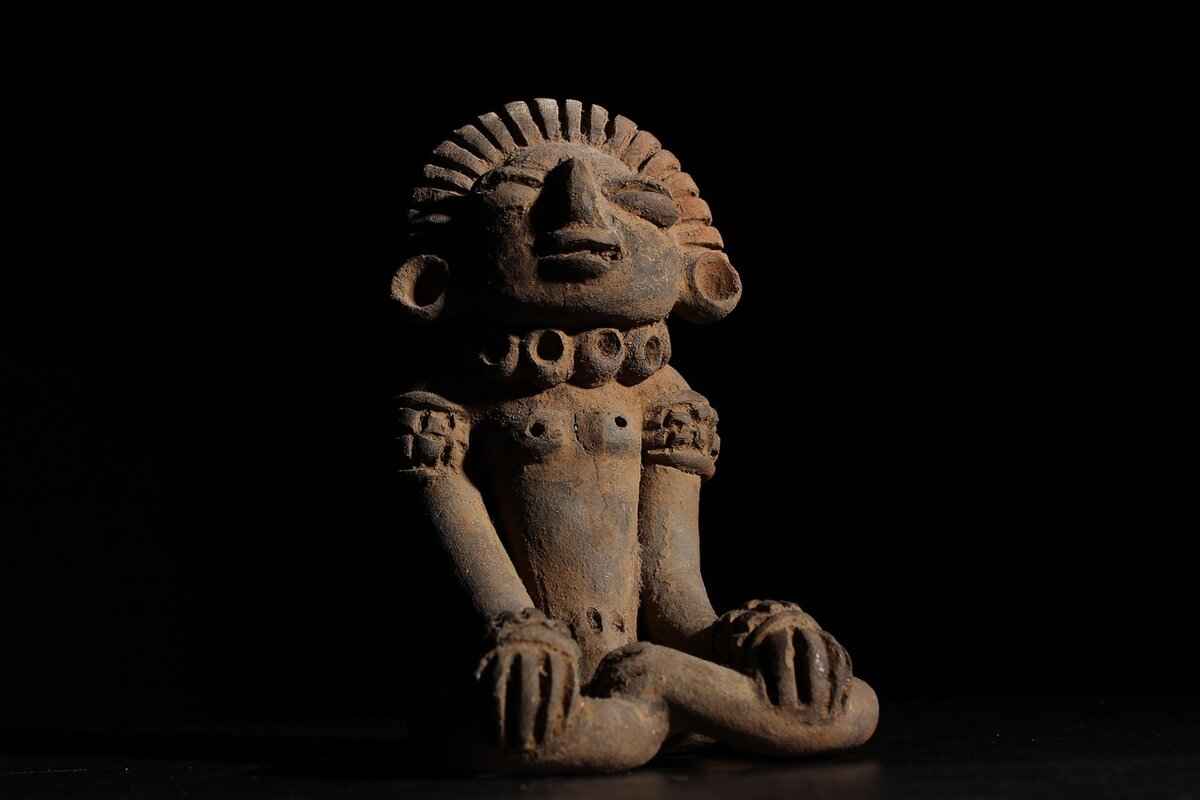
Famous Terracotta Art Sites in Bengal
are a testament to the region’s rich cultural heritage and artistic prowess. These sites not only showcase the intricate craftsmanship of local artisans but also serve as significant historical landmarks that attract visitors from around the world. Below, we explore some of the most renowned locations in Bengal where terracotta art flourishes.
- Bankura District: A Hub of Terracotta Craft
Bankura is celebrated for its vibrant terracotta sculptures that reflect a blend of traditional motifs and modern interpretations. The artisans here have mastered various techniques, producing pieces that range from religious icons to intricate decorative items. Visitors can explore local workshops where artisans demonstrate their skills, providing a deeper understanding of this ancient craft.
- Murshidabad and Its Terracotta Temples
Murshidabad is home to some of the most exquisite terracotta temples in Bengal. These temples feature elaborate carvings that narrate historical events and mythological stories, making them a significant part of Bengal’s artistic heritage. Notable examples include the Jor Bangla Temple and the Katgola Palace, both of which showcase the intricate artistry and cultural significance of terracotta in religious architecture.
- Birbhum: The Land of Terracotta Art
Birbhum is another prominent area known for its terracotta art. The local artisans create stunning pieces that often depict rural life and folklore. The Terracotta Temple of Suri is a must-visit, featuring detailed carvings that reflect the region’s history and traditions.
- West Bengal’s Folk Art Villages
Several villages in West Bengal, such as Shantiniketan, are renowned for their folk art, including terracotta works. These villages often host art fairs and festivals that celebrate local craftsmanship, providing visitors with an opportunity to purchase unique pieces directly from the artisans.
In conclusion, Bengal’s famous terracotta art sites offer a rich tapestry of history, culture, and artistry. Each location provides a unique glimpse into the region’s artistic traditions, making them essential stops for anyone interested in exploring the beauty and significance of terracotta art.
Bankura District: A Hub of Terracotta Craft
Bankura District, located in the heart of West Bengal, India, is renowned for its vibrant terracotta sculptures. This district has emerged as a significant hub for terracotta art, showcasing a rich tapestry of artistic expressions that range from traditional motifs to contemporary interpretations. The artisans of Bankura have preserved their craft over generations, ensuring that this unique art form continues to thrive.
The terracotta art of Bankura is characterized by its intricate designs and the use of locally sourced clay. Artists skillfully mold the clay into various forms, often depicting scenes from daily life, mythology, and nature. The vibrant colors and detailed craftsmanship reflect the cultural heritage of the region, making Bankura a vital center for art enthusiasts and historians alike.
- Traditional Motifs: Many sculptures feature traditional themes, including Hindu deities, animals, and floral designs that are deeply rooted in local folklore.
- Contemporary Interpretations: Modern artists are reimagining these traditional forms, incorporating abstract concepts and innovative techniques that resonate with today’s audience.
- Community Involvement: The art form is not just a personal endeavor; it involves the entire community, with families often passing down their skills and knowledge through generations.
Bankura’s terracotta art is not only a reflection of the region’s rich cultural heritage but also plays a crucial role in the local economy. The demand for these unique pieces has led to the establishment of numerous workshops and galleries, attracting both domestic and international tourists.
In conclusion, Bankura District stands as a beacon of terracotta craftsmanship, where the past meets the present. Its vibrant artistic expressions continue to captivate audiences, ensuring that this ancient art form remains relevant in today’s artistic landscape.
Murshidabad and Its Terracotta Temples
Murshidabad, a city steeped in history, is renowned for its magnificent terracotta temples, which stand as a testament to the region’s rich artistic heritage. These temples are not just places of worship; they are intricate works of art that tell stories of mythology, history, and the cultural evolution of Bengal.
The terracotta temples of Murshidabad are characterized by their elaborate carvings that depict various scenes from Hindu mythology and significant historical events. Each temple is adorned with intricate motifs that serve both aesthetic and narrative purposes, making them a focal point for visitors and scholars alike.
| Temple Name | Year Built | Significance |
|---|---|---|
| Jagatdhatri Temple | 1850 | Dedicated to Goddess Jagatdhatri, showcasing exquisite terracotta work. |
| Gopinath Temple | Late 18th Century | Features detailed carvings of deities and mythological scenes. |
| Shyamsundar Temple | Early 19th Century | Known for its intricate facade and historical significance. |
The craftsmanship involved in creating these temples is a reflection of the skill and dedication of local artisans. The use of terracotta as a primary material not only highlights the region’s natural resources but also showcases the traditional techniques passed down through generations.
Moreover, these temples hold a special place in the hearts of the local community. They are often the site of festivals and religious ceremonies, fostering a sense of togetherness and cultural identity among the people of Murshidabad.
In conclusion, the terracotta temples of Murshidabad are more than mere structures; they are a vibrant part of Bengal’s cultural tapestry. Their architectural beauty and the stories they tell continue to captivate visitors, ensuring that the legacy of this unique art form endures for generations to come.

The Modern Revival of Bengal’s Terracotta Art
In recent years, there has been a remarkable revival of interest in Bengal’s terracotta art, a traditional craft that has transcended time and continues to inspire contemporary artists. This resurgence reflects not only a growing appreciation for the region’s rich cultural heritage but also an innovative spirit that seeks to blend traditional techniques with modern aesthetics.
Contemporary artists are now exploring new themes and materials, pushing the boundaries of terracotta art while maintaining the essence of its historical roots. This fusion of old and new has led to the creation of captivating pieces that resonate with both local and global audiences.
- Innovative Techniques: Artists are experimenting with various glazing methods and firing techniques, enhancing the visual appeal of their works.
- Modern Themes: While traditional motifs are celebrated, many artists are incorporating contemporary issues such as environmental sustainability and social justice into their art.
- Collaborative Projects: There is a growing trend of collaboration between artists and craftsmen, which helps in preserving the traditional methods while infusing fresh ideas and perspectives.
Moreover, exhibitions and art fairs dedicated to terracotta art have gained popularity, providing a platform for emerging artists to showcase their creations. These events not only highlight the beauty and intricacy of terracotta sculptures but also foster a sense of community among artists and art lovers.
The impact of this revival extends beyond aesthetics; it serves as a vital link connecting the past with the present, ensuring that the legacy of Bengal’s terracotta art continues to thrive. As contemporary artists embrace this ancient craft, they are not only preserving its traditions but also redefining its place in the modern art world.
In conclusion, the modern revival of Bengal’s terracotta art exemplifies a harmonious blend of tradition and innovation, making it a dynamic and evolving art form that captures the essence of Bengali culture while appealing to contemporary sensibilities.
Contemporary Artists and Their Contributions
In recent years, a dynamic wave of contemporary artists has emerged in Bengal, redefining the landscape of terracotta art. These artists are not just preserving ancient techniques; they are also infusing modern themes and innovative materials, creating a vibrant dialogue between the past and the present.
One notable trend among these artists is the exploration of social issues. Many are using terracotta as a medium to comment on contemporary challenges such as environmental sustainability, gender equality, and cultural identity. For example, artist Subrata Das incorporates recycled materials into his sculptures, highlighting the importance of sustainability in art.
Moreover, the use of technology has also found its way into terracotta art. Artists like Rina Roy are experimenting with digital designs that are then translated into clay, merging traditional craftsmanship with modern techniques. This fusion not only enhances the visual appeal of the artworks but also attracts a younger audience.
| Artist | Contribution |
|---|---|
| Subrata Das | Incorporates recycled materials to promote sustainability. |
| Rina Roy | Combines digital design with traditional terracotta methods. |
| Arjun Mukherjee | Focuses on social themes and local narratives. |
Exhibitions featuring these contemporary artists have gained significant attention, showcasing the evolution of terracotta art in a modern context. Events like the Bengal Art Summit provide a platform for these artists to present their works, fostering a deeper appreciation for the craft among art enthusiasts and collectors alike.
In conclusion, the contributions of contemporary artists are pivotal in ensuring that Bengal’s terracotta art remains not only a symbol of cultural heritage but also a living, evolving art form. Their innovative approaches are vital in bridging the gap between tradition and modernity, ensuring the craft continues to thrive in a rapidly changing world.
Terracotta Art in Modern Exhibitions
In recent years, the world of contemporary art has witnessed a remarkable resurgence of interest in terracotta art, particularly in Bengal. This revival has been significantly highlighted at various modern exhibitions and art fairs, where terracotta art has taken center stage. These events offer a unique platform for a new generation of artists to showcase their innovative works, bridging the gap between traditional craftsmanship and contemporary artistic expression.
One of the most exciting aspects of this modern revival is the way in which artists are reinterpreting traditional techniques. Many contemporary creators are experimenting with form, color, and themes, merging age-old practices with modern aesthetics. This fusion not only honors the rich heritage of terracotta art but also makes it relevant to today’s audiences. As a result, visitors to these exhibitions are treated to a diverse array of pieces that challenge conventional perceptions of terracotta as merely a historical craft.
Furthermore, the inclusion of terracotta art in prominent exhibitions allows for greater visibility and appreciation on a global scale. Artists are now able to connect with international audiences, fostering a dialogue that transcends geographical boundaries. This exposure is crucial for the sustainability of terracotta art, as it encourages both collectors and art enthusiasts to invest in and support this unique form of expression.
Additionally, many exhibitions feature workshops and interactive sessions, inviting attendees to engage directly with the medium. This hands-on experience not only educates the public about the intricacies of terracotta art but also inspires a new generation of artists to explore this versatile material. The emphasis on community engagement is a vital component of these modern exhibitions, as it helps to cultivate a deeper appreciation for the cultural significance of terracotta art.
In conclusion, the prominence of terracotta art in modern exhibitions signifies a revitalization of this ancient craft. By merging tradition with contemporary practices, artists are not only preserving the legacy of terracotta art but are also ensuring its relevance in the ever-evolving landscape of global art. As audiences continue to embrace these innovative works, the future of terracotta art looks promising and vibrant.
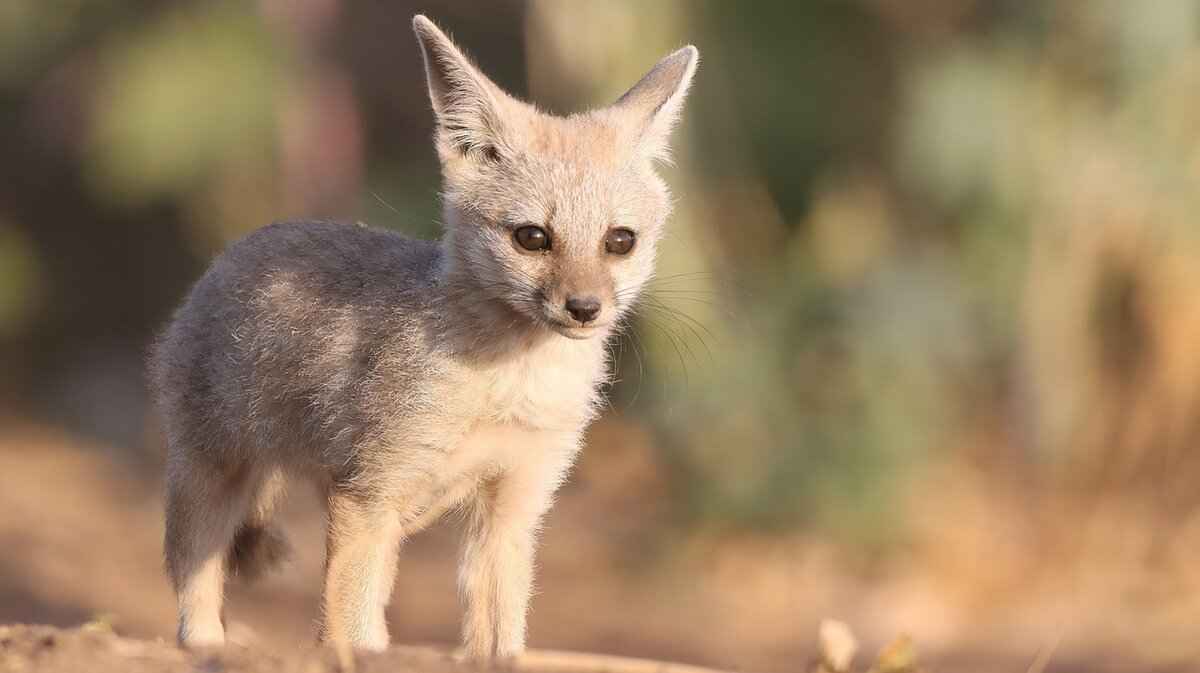
Conclusion: The Enduring Legacy of Bengal’s Terracotta Art
Bengal’s terracotta art is not merely a relic of the past; it is a vibrant and evolving form of cultural expression that continues to resonate in today’s artistic landscape. This unique art form serves as a bridge between the rich traditions of the past and the innovative practices of the modern era. As contemporary artists engage with this ancient craft, they breathe new life into terracotta, ensuring its relevance and appreciation among diverse audiences.
The resurgence of interest in Bengal’s terracotta art can be attributed to a growing movement among artists who are keen to explore and reinterpret traditional techniques. By integrating contemporary themes and materials, these artists are creating works that not only pay homage to their cultural heritage but also challenge and expand the boundaries of what terracotta art can represent. This dynamic interplay between tradition and modernity is crucial for the survival of this art form.
Moreover, the inclusion of terracotta art in modern exhibitions and art fairs has played a significant role in promoting its visibility. These platforms allow emerging artists to showcase their innovative creations, making it possible for a new generation to engage with this ancient craft. As a result, Bengal’s terracotta art is not just preserved; it is actively evolving, reflecting the changing narratives and aspirations of contemporary society.
In conclusion, Bengal’s terracotta art is a testament to the region’s rich cultural history and its ability to adapt to the modern world. By bridging the gap between the past and the present, this art form continues to thrive, ensuring that future generations will appreciate and celebrate its unique beauty and significance. The ongoing dialogue between tradition and innovation guarantees that Bengal’s terracotta art will remain a vital part of the global artistic landscape.
Frequently Asked Questions
- What is Bengal’s terracotta art?
Bengal’s terracotta art is a traditional form of sculpture made from clay, reflecting the region’s rich cultural heritage and artistic evolution. It often features intricate designs and motifs that are deeply rooted in the local history and spirituality.
- How did terracotta art influence Bengali culture?
This art form symbolizes spirituality and community, connecting the past with the present. It plays a significant role in religious practices, showcasing deities and rituals that resonate with the local traditions and beliefs.
- What techniques are used in creating terracotta art?
Artisans employ various techniques, including molding, carving, and firing, using local clay and natural materials. The craftsmanship reflects a blend of skill and creativity passed down through generations, ensuring the preservation of this unique art form.
- Where can I find famous terracotta art sites in Bengal?
Notable locations include Bankura, known for its vibrant sculptures, and Murshidabad, famous for its elaborately carved terracotta temples. These sites attract visitors eager to explore the intricate works and their historical significance.
- Is terracotta art experiencing a revival today?
Absolutely! Contemporary artists are blending traditional techniques with modern aesthetics, leading to a resurgence of interest in terracotta art. New exhibitions are showcasing these innovative works, connecting them with global audiences.

